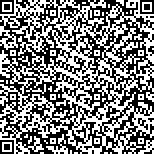| 孙满强,胡凯文,陈 琪.冷冻消融术对Lewis肺癌小鼠肿瘤微环境炎症因子的影响[J].肿瘤学杂志,2019,25(9):774-778. |
| 冷冻消融术对Lewis肺癌小鼠肿瘤微环境炎症因子的影响 |
| Effects of Cryoablation on Tumor Microenvironmental Inflammatory Factors in Lewis Lung Cancer Mice |
| 投稿时间:2019-02-24 |
| DOI:10.11735/j.issn.1671-170X.2019.09.B002 |
|
 |
| 中文关键词: 冷冻消融术 0℃复温 40℃复温 炎症因子 |
| 英文关键词:cryoablation 0℃ rewarming temperature 40℃ rewarming temperature inflammatory cytokines |
| 基金项目:国家自然科学基金(81403250);北京中医药大学基本科研业务(2019-JYB-XS) |
|
| 摘要点击次数: 1478 |
| 全文下载次数: 340 |
| 中文摘要: |
| 摘 要:[目的] 探究不同复温温度下冷冻消融术对Lewis肺癌小鼠肿瘤微环境中炎症因子的影响。[方法] 45只C57BL小鼠随机分为3组,每组15只,分别是对照组、T0组(复温至0℃)、T40组(复温至40℃)。实验组小鼠采用单循环冷冻—复温消融手术,当冰球覆盖至肿瘤边缘时,停止降温,分别复温至0℃和40℃。冷冻消融术后第14d对小鼠进行处死、取材,称量小鼠的体重和肿瘤重量,采用免疫组化的方法测量肿瘤组织中白细胞介素4(IL-4)、转化生长因子-β(TGF-β)、干扰素-?酌(IFN-?酌)和肿瘤坏死因子(TNF-?琢)的表达。[结果] 各组小鼠体重在冷冻手术干预前并无显著性差异,术后14d对照组体重为(20.43±1.74)g,T0组体重为(18.59±0.98)g,T40组体重为(18.91±0.86)g。T0组和T40组体重均小于对照组(F=9.199,P<0.05)。术后第14天对照组瘤重为(1.83±2.59)g,T0组瘤重为(1.37±1.69)g,T40组瘤重为(1.54±1.00)g,T0组和T40组瘤重均低于对照组(F=0.23,P<0.05)。免疫组化结果以平均光密度值(IOD/Area)来表示,对照组IL-4表达量为0.102±0.015,T0组表达量为0.094±0.012,T40组表达量为0.101±0.013,T0组<对照组(P<0.05),T40组与对照组之间无统计学差异。对照组TGF-β表达量为0.129±0.036,T0组表达量为0.090±0.013,T40组表达量为0.110±0.039,T0组<对照组(P<0.05),T40组与对照组之间无统计学差异。对照组IFN-γ表达量为0.100±0.016,T0组表达量为0.121±0.036,T40组表达量为0.112±0.043,T0组>对照组(P<0.05),T40组与对照组之间无统计学差异。对照组TNF-α表达量为0.110±0.018,T0组表达量为0.129±0.033,T40组表达量为0.117±0.018,T0组>对照组(P<0.05),T40组与对照组之间无统计学差异。[结论] 冷冻消融术对于残存瘤侵袭转移有抑制作用,其机制可能与调控肿瘤微环境中的炎症因子有关,相较于40℃复温,0℃在这一机制方面具有更好的调控效果。 |
| 英文摘要: |
| Abstract:[Objective] To investigate the effect of cryoablation at different rewarming temperatures on inflammatory factors in tumor microenvironment of Lewis lung cancer mice. [Methods] Forty-five C57BL mice were randomly divided into 3 groups,15 in each group,control group,T0 group(thawing to 0℃),the T40 group(thawing to 40℃). The mice in the experimental group were treated with single cycle cryopreservation and rewarming ablation. When the puck reaches the edge of the tumor,stop the cooling. After wen to 0℃ and 40℃ respectively. Mice were sacrificed and sampled 14 days after cryoablation. The mice were weighed and the tumor was weighed. Testing the expression of IL-4、TGF-β、IFN-γ、TNF-α with immunohistochemistry. [Results] There was no significant difference in body weight between the groups before cryosurgery intervention.14 days after surgery,the weight of the control group was (20.43±1.74)g,the T0 group was (18.59±0.98) g,and the T40 group was(18.91±0.86)g. Both T0 group and T40 group had significantly lower body weight than that in control group(F=9.199,P<0.05). On the 14th day after surgery,the tumor weight of the control group was(1.83±2.59) g,that of the T0 group was (1.37±1.69)g,and that of the T40 group was(1.54±1.00)g,both of which were lower than those of the control group(F=0.23,P<0.05). Immunohistochemical results were represented by mean optical density(IOD/Area). The expression level of IL-4 in the control group was 0.102±0.015,that in the T0 group was 0.094±0.012,that in the T40 group was 0.101±0.013. The expression of T0that of control group(F=1.89,P<0.05). There was no significant difference between T40 group and control group. The expression level of TNF-α in the control group was 0.110±0.018,that in the T0 group was 0.129±0.033,that in the T40 group was 0.117±0.018,The expression of T0>that of control group(F=6.041,P<0.05). There was no significant difference between T40 group and control group. [Conclusion] Cryoablation can inhibit the invasion and metastasis of residual tumor. The mechanism may be related to the regulation of inflammatory factors in tumor microenvironment. Compared with 40℃ temperature,0℃ in this mechanism has better control effect. |
|
在线阅读
查看全文 查看/发表评论 下载PDF阅读器 |